When to Use Wood Flooring Protection Tips: Flooring Maintenance Best Practices
Industry data backs this up. In 2021, flooring sales in the U.S. hit 20.148 billion square feet. That was a 6.2% jump from the year before. Since every type of flooring is selling more, I suggest it’s smart to protect what you have. This helps you avoid paying to replace it too soon. This trend highlights the growing demand for commercial flooring protection systems in both new construction and renovation projects.
People are catching on. The market for temporary floor protection was $164.21 million in 2023. It’s expected to grow to $233.16 million by 2031. To me, this shows more homeowners and business owners want their floors to last. Taking care of your floors saves you money over time and keeps your property looking great.
1. A Simple Cleaning Routine: How I Keep My Floors Protected
A regular cleaning routine is key to protecting your floors from damage and wear. From my experience, when you stay consistent, your floors last much longer. This helps you avoid expensive repairs down the line. Many commercial flooring contractors now recommend LVP for fast project turnover and easy spec compliance.
My Essential Day-to-Day and Weekly Tasks
Remove Dirt Every Day: Dust and sand might not seem harmful. But a single square yard of carpet can hold up to a pound of dirt in just one week. I make it a habit to use a microfiber dust mop or vacuum each day. I suggest paying extra attention to high-traffic zones like entryways.
Vacuum Entrance Mats Each Day: Most dirt—over 80%—is tracked into a building from outdoors. I recommend cleaning entrance mats, both inside and outside, every day. This simple step catches dirt before it spreads to your floors.
Weekly Floor Care: I suggest you mop your floors once a week. Use a pH-neutral, gentle cleaner that is right for your floor type. If you have carpets or rugs in busy areas, you might need to vacuum more than once a week.
My Monthly and Seasonal Deep Cleaning Plan
Deep Clean or Polish Each Month: I set aside time every month to deep clean my hard floors. I also polish them when they need it. For my tile floors, I make sure to clean the grout at least once a quarter.
Inspect and Repair: I check my floors for surface scratches or chips every month. You should address any issues right away to stop them from getting worse.
Adjust for the Seasons: During winter or rainy months, you’ll need to increase your deep cleaning. This removes tracked-in salt and sand, which can wear away floor finishes.
2. Stop Water Damage: How I Protect My Floors from Expensive Problems
A small spill can create big problems if you ignore it. This is a huge issue for wood or laminate floors. Water getting into the seams can make the floor swell, buckle, and suffer permanent damage. I’ve seen that laminate flooring is very much at risk. Once water gets into its wood fiber core, repairs are almost impossible. You might have to replace the entire floor.
Simple Steps I Recommend to Prevent Water Damage
Wipe Up Spills Fast: Don’t wait for water to dry on its own. I recommend cleaning it up right away to save your floor.
Use Good Mats at Doors: I suggest placing absorbent mats at entrances. They trap water and dirt before it gets to your floors. This is a great way to cut down on damage, and I see it working well in commercial buildings.
Seal Your Grout Lines: Tile floors resist water, but grout can absorb it. If you don’t seal it once a year, you risk mold and structural problems. I believe this annual task is essential.
Check for Leaks: An average home leak can waste 10,000 gallons of water a year. I suggest using smart leak detectors. You can also check your water bill for sudden spikes to find hidden leaks.
Keep Wet Things Off the Floor: Wet shoes, umbrellas, and towels should never sit on any type of flooring.
Teach Your Household: Make certain everyone in your home understands they need to act fast when something spills.
My Key Takeaway: Quick, Proactive Care Works
Small mistakes with moisture can lead to costly repairs. Sometimes you might need a whole new floor. Cleaning up spills fast and taking simple steps saves you money and stress. I recommend using mats and sealing grout to protect your flooring investment for the future.
3. Use Protective Pads and Furniture Precautions: Prevent Scratches, Dents, and Floor Damage

Protecting your floors from the impact of furniture is one of the simplest and most effective ways to prevent costly damage. Using protective pads can prevent scratches even on commercial laminate flooring and hardwood surfaces. According to industry best practices, using felt pads and proper furniture glides is essential to prevent scratches on hardwood surfaces.
Felt Pads: Affordable, Easy, and Ideal for Moving Furniture
Felt pads are my go-to recommendation for dining chairs and furniture that you move frequently. They’re budget-friendly—a pack of 24 can cost as little as €2—and come in a range of sizes to fit all types of legs. These pads use strong adhesives for easy attachment and allow furniture to glide smoothly, which prevents scratches and dents on hardwood and laminate surfaces.
Rubber Pads: Extra Grip for Heavy or Fixed Furniture
For heavier furniture or pieces over 50 kg that don’t get moved much, I prefer rubber pads. They offer a firmer, more secure grip and are less likely to slip out of place. This grip helps prevent those unexpected slips or skids that cause deep floor gouges and dents. Rubber pads are especially helpful in high-traffic zones.
Be careful with light-colored floors: some rubber materials can leave marks if they’re not designed specifically for your flooring type.
They tend to last longer than felt pads, retaining their shape and cushion even under heavy weight.
My key takeaway: The small investment of time and money in quality pads pays off by keeping your floors in excellent shape. It prevents noise, reduces visible damage, and preserves the look and value of your home or workplace.
4. Install Rugs and Mats in High-Traffic Areas: A Strategic Move for Floor Protection
Placing rugs and mats in high-traffic areas is one of the most effective and affordable ways to guard your flooring against everyday damage and wear. Strategically chosen area rugs serve as the first line of defense in busy homes and commercial settings alike.
Choose Durable and Functional Materials
For high-traffic spaces, always look for flat-woven or low-pile rugs made from materials like nylon, polypropylene, or quality wool. These fibers are known for standing up to consistent foot traffic and are far easier to clean.
Rugs with non-slip backing are especially important. They keep the rug in place, preventing slips and also stopping the rug from bunching up and causing hidden floor damage or discoloration.
I recommend going for patterns, textured surfaces, or darker colors—they’re much better at hiding stains and dirt, so your space continues to look tidy between deeper cleans. Installing durable area rugs and mats in high-traffic commercial spaces helps extend floor life.
5. Control Indoor Humidity and Sun Exposure: Key Steps to Prevent Flooring Damage
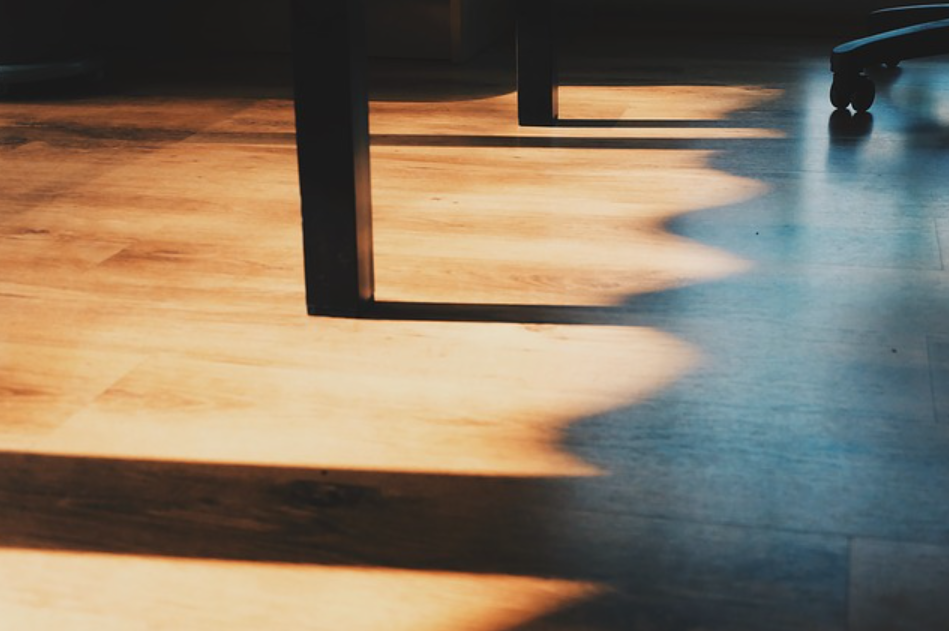
Properly managing your home’s indoor climate is one of the most critical ways to protect your floors from costly damage. Changes in humidity and sunlight can quietly destroy even the best flooring over time.
How I Manage Humidity for Floor Protection
Use Dehumidifiers in Summer
I run dehumidifiers to pull moisture out of the air, protecting my floors from swelling and mold.
Use Humidifiers in Winter
Humidifiers are key in my home to add moisture back into the air when it gets too dry, keeping wood floors from developing cracks.
Monitor With Hygrometers
I keep a digital hygrometer in living areas to make sure humidity stays in the safe zone. This cheap tool has saved me from repairs and guesswork.
Recommended Indoor Temperature
Keep rooms between 60°F–80°F (15.5°C–26.7°C) for the best results with hardwood and most other flooring.
Pro Tip: When installing new floors, I always store and acclimate flooring in the room for at least 48 hours, keeping humidity in the 40%-60% range and temperature at 64–73°F (18–23°C) to prevent future warping or buckling.
Protect Floors from Sunlight: Prevent Fading and Discoloration
Direct sun exposure is another silent threat to flooring quality and appearance.
Install Curtains and Blinds
I use curtains or blinds in rooms that get direct sunlight. Blocking harsh rays helps stop wood and laminate floors from fading or yellowing over time.
Add UV-Blocking Window Films
For areas that are hard to shade, I’ve applied special films to the glass. These quietly shield the floors from invisible UV damage without darkening my rooms.
6. Reapply Protective Finishes When Needed
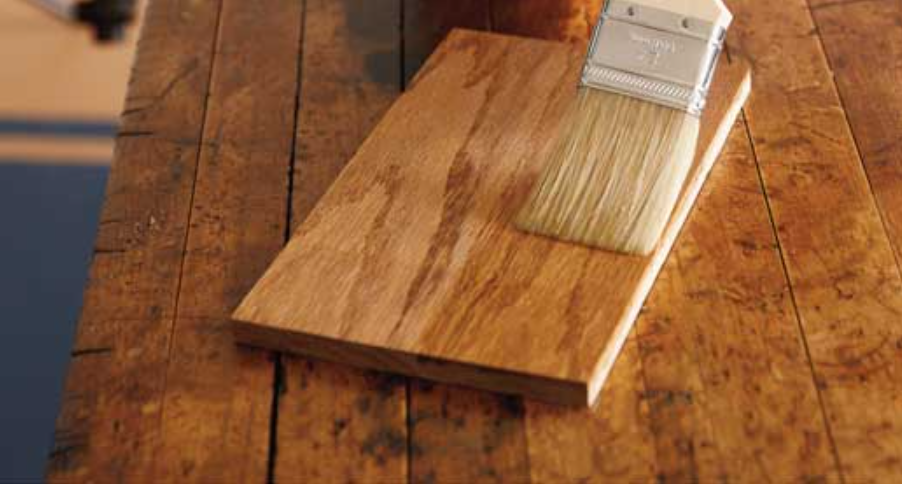
Regularly reapplying protective finishes—such as polyurethane, epoxy, or wax—is key to preventing wear and prolonging the life of your floors. High-traffic areas and spaces exposed to sunlight need special attention because foot traffic and UV rays can wear down finishes faster. Routine inspections and repairs are critical for maintaining commercial flooring installations at peak condition.
How Often Should You Reapply Floor Finishes?
Polyurethane Finish:
Residential spaces: every 3–5 years
Commercial or high-traffic: every 1–3 years
Epoxy & Polyaspartic Coatings:
Homes: every 3–5 years
Businesses, restaurants, clinics: every 1–3 years
Hardwood Floors:
Water-based polyurethane: refinish every 3–5 years
Full sanding and sealing: every 7–10 years for busy spaces, or every 10–15 years where traffic is lower
“Screen and recoat” (light sanding + new finish): every 3–5 years
Floor Polishes (laminate or vinyl):
High-traffic: every 1–2 months
Moderate traffic: every 2–4 months
Low-traffic: every 4–6 months
7. Rotate Rugs and Furniture: Smart Strategies to Prevent Floor Damage and Uneven Wear
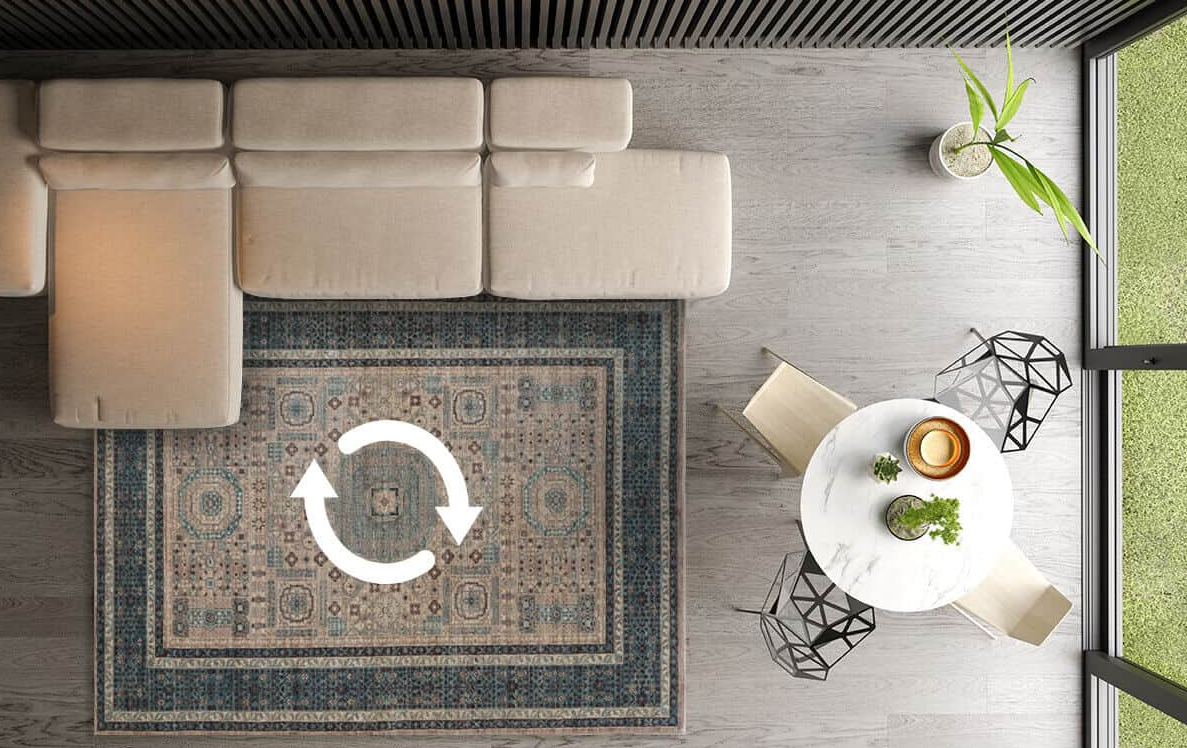
Rotating your rugs and furniture every 3 to 6 months is one of the most effective ways to distribute wear, prevent permanent dents, and minimize fading caused by constant pressure and sunlight exposure.
Many homeowners overlook this simple habit, but the impact is striking. Even just moving a heavy sofa or armchair twice a year can stop the formation of deep impressions and uneven color loss—particularly on hardwood and carpeted floors.
Following proper floor maintenance practices like rotating rugs and furniture can significantly extend the life of your floors
Why Regular Rotation Matters for Floor Longevity
Prevents High-Traffic Damage: Regular movement disrupts the formation of “traffic lanes” and crushed carpet fibers. On wood, it stops permanent dents and worn spots from forming beneath furniture legs and repetitive footpaths.
Fights Fading from Sunlight: Floors exposed to the sun lose their color much faster in areas that are never covered. By rotating rugs, you balance out UV exposure, slowing down uneven discoloration and protecting your floors’ original appearance.
Data-Driven Results: Flooring care experts report that sticking to a rotation schedule can increase the visual lifespan of both carpets and hardwood floors by up to 30%. Offices that rotated desks and mats every 6 months saw a 25% reduction in carpet fiber crushing and fading.
8. Avoid Harsh Cleaning Products and Techniques: Protect Floor Finish and Prevent Damage
Best Cleaning Techniques for Floor Protection
Clean spills right away to stop stains and warping before they take hold.
Always use a lightly dampened microfiber mop instead of soaking the surface. Too much water leads to the same issues as steam cleaning.
Check for full ingredient lists and opt for biodegradable, non-toxic cleaners wherever possible.
These habits are especially important in homes with children, pets, or anyone with allergies.
Key Takeaway
By avoiding harsh chemicals and improper techniques, and sticking with gentle, floor-specific products, you protect both the look and the structure of your flooring. The right approach not only preserves your investment, but it also dramatically reduces the risk of costly repairs or early replacement.
9. Seasonal Maintenance Adjustments: How to Protect Your Floors Year-Round
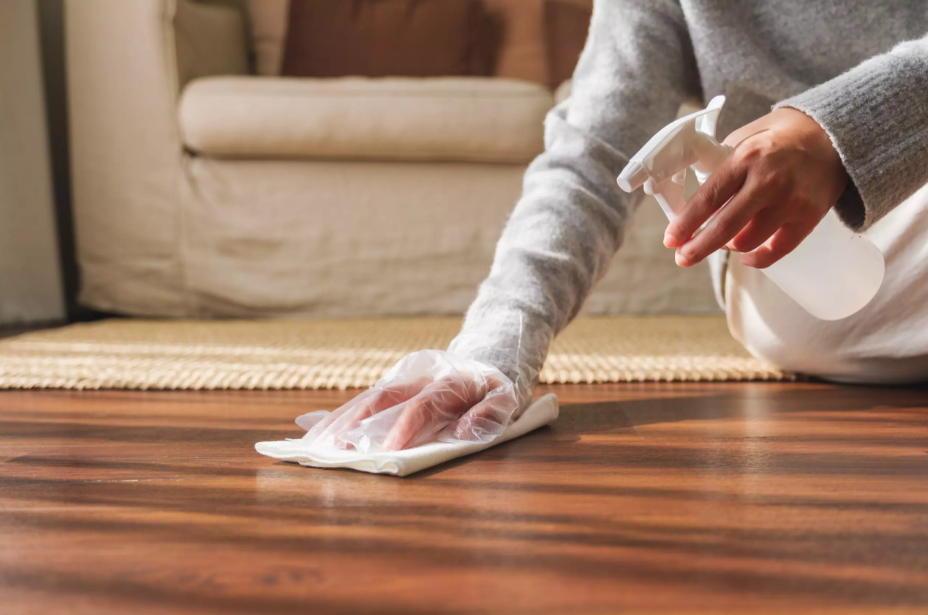
Seasonal changes are one of the biggest factors that impact the lifespan and appearance of your flooring, especially for hardwood, engineered wood, and laminate surfaces. Flooring materials expand and contract as temperatures and humidity levels shift, making thoughtful seasonal maintenance critical for preventing costly damage and wear.
Adjust Your Routine for Humidity and Temperature Swings
Keep Indoor Humidity Stable:
Floors made from wood are especially sensitive to moisture. The ideal indoor humidity range is 35% to 55%—keeping within this zone reduces the risk of boards swelling, shrinking, or forming gaps.
Winter: Heating systems dry out the air, causing wood to contract and form spaces between planks.
Summer: Higher humidity levels can make floors expand, leading to cupping or buckling.
Set Indoor Temperature Between 60°F and 80°F:
Avoid rapid changes; sudden swings stress the flooring and increase the risk of cracks or warping.
Tools to Help
Humidifiers: Essential in winter to add moisture to the air and prevent contraction.
Dehumidifiers: Key in summer to pull excess moisture and avoid expansion or mold.
Digital Hygrometer: Use this simple tool to monitor your home’s humidity accurately.
10. Prompt Repair and Regular Floor Inspections: Key Steps for Floor Damage Prevention
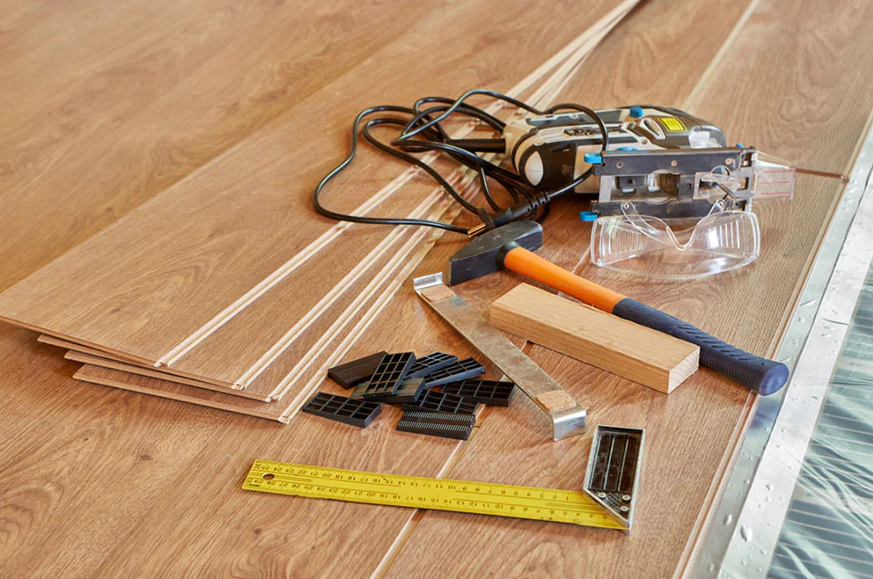
Staying ahead of floor damage begins with regular floor inspections and committing to swift, targeted repairs. Small issues can quickly spiral into significant expenses and safety hazards if neglected, so building a structured inspection and repair routine is essential.
Essential Areas to Check During Floor Inspections
Focus your inspections on these high-risk areas and warning signs:
Surface Deterioration: Look for small chips, cracks, pits, or spots of discoloration.
Moisture and Spills: Clean up all spills immediately to prevent stains, mold, or mildew.
Loose or Uneven Flooring: Test for any tiles, planks, or floorboards that move or appear uneven.
Gaps Between Planks: Inspect for growing or irregular gaps, a common issue due to humidity or temperature changes.
Pest and Insect Damage: Watch for signs of termites or other pests, as these can seriously weaken your flooring’s substructure.
Scratches, Gouges, and Stains: Check areas with high foot traffic or under furniture—surface scratches or stains left untreated can become deep-set, making future repairs harder and costlier.
Warping, Buckling, and Peaking: Any signs of boards lifting or edges curling need urgent action. For laminate, watch for peaking joints or buckled planks—these issues multiply quickly if moisture is present.
Telegraphing in Vinyl, Raised Nail Heads, or Carpet Unevenness: Feel under carpets for bumps and keep an eye out for subfloor flaws that show through vinyl flooring.
Professional Tools: Use a moisture meter or inspection checklist. These help catch hidden moisture and track trends over time, protecting your investment.
